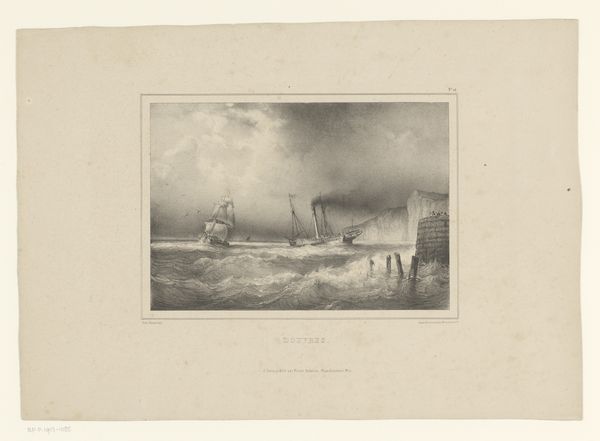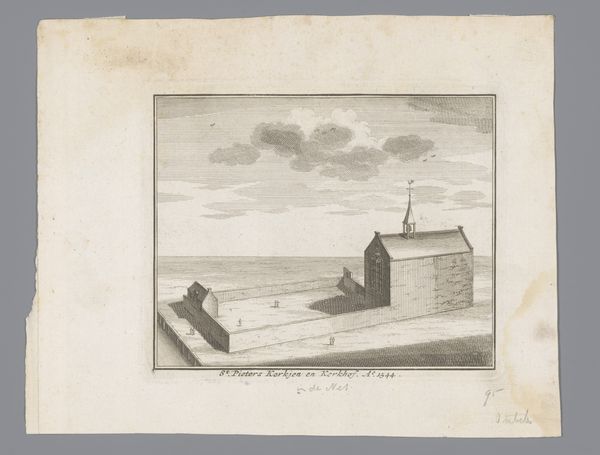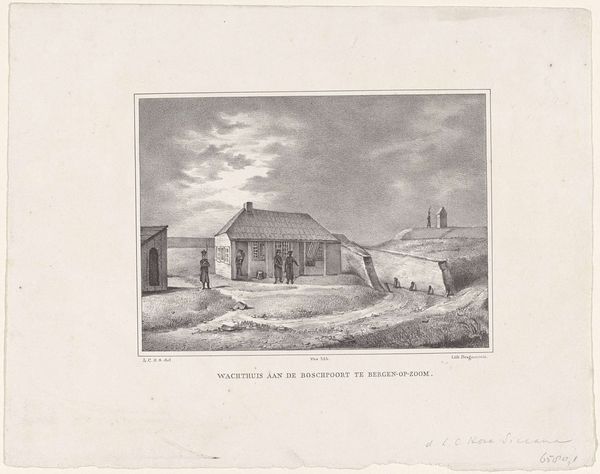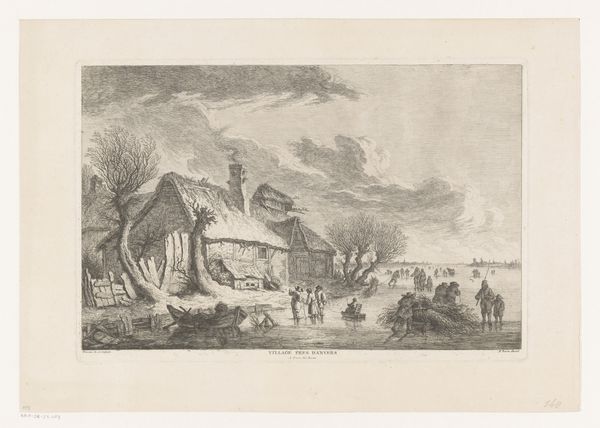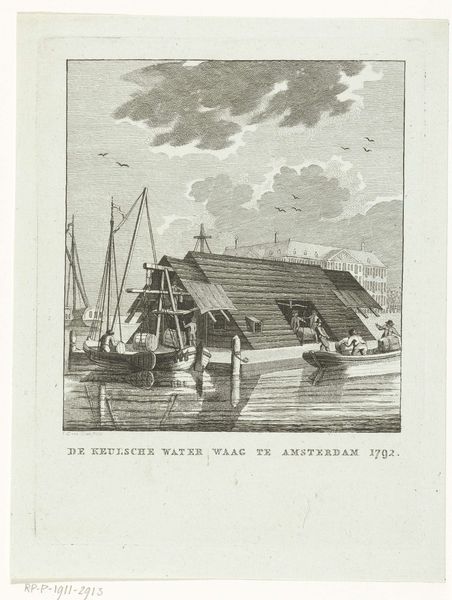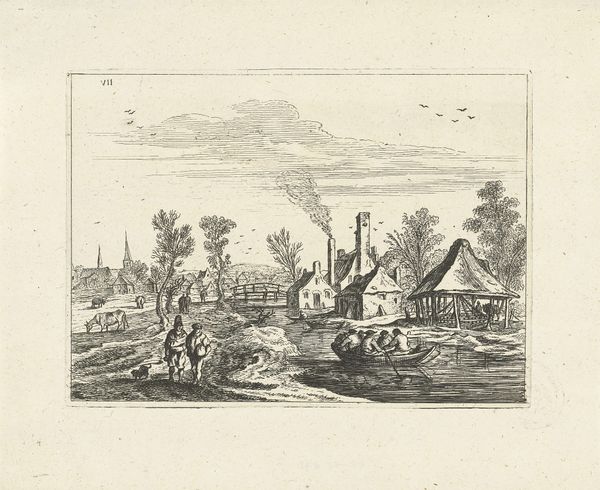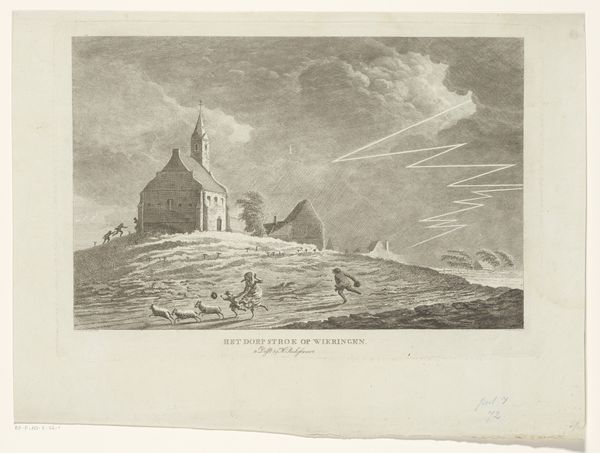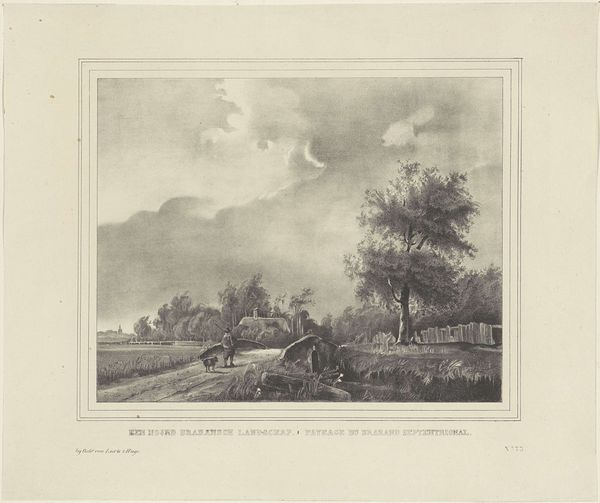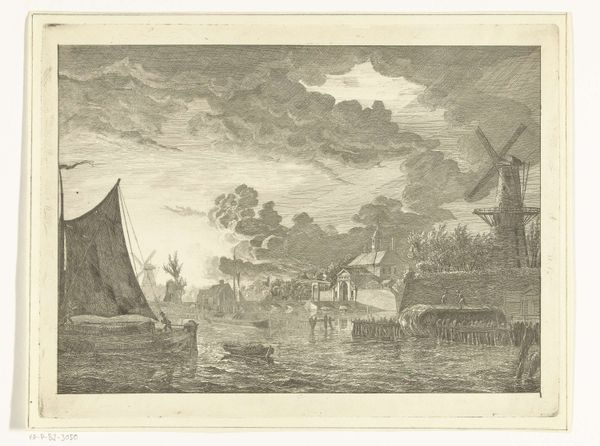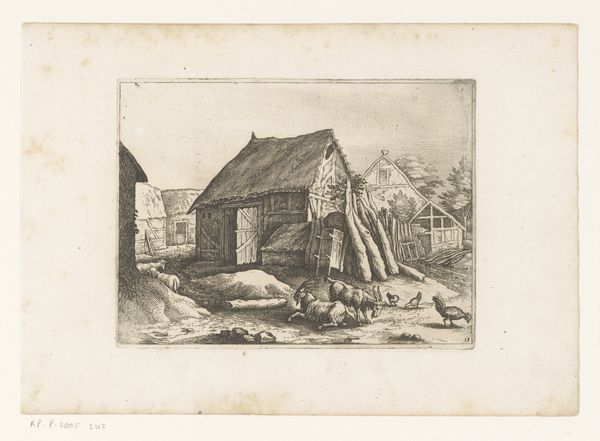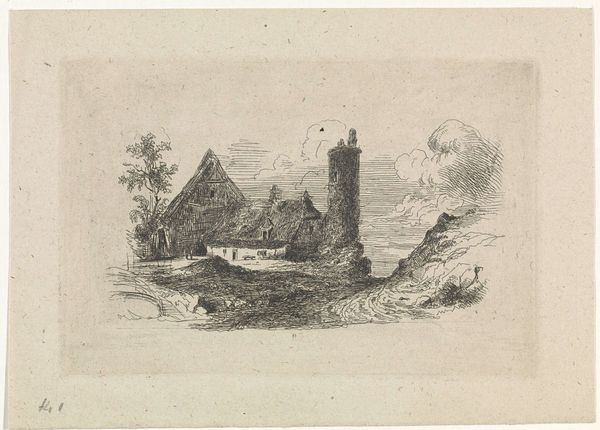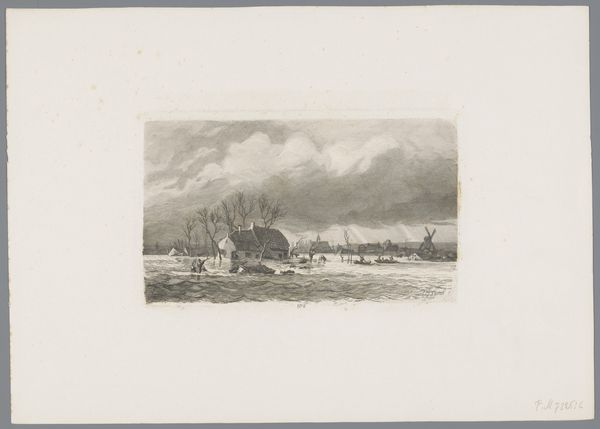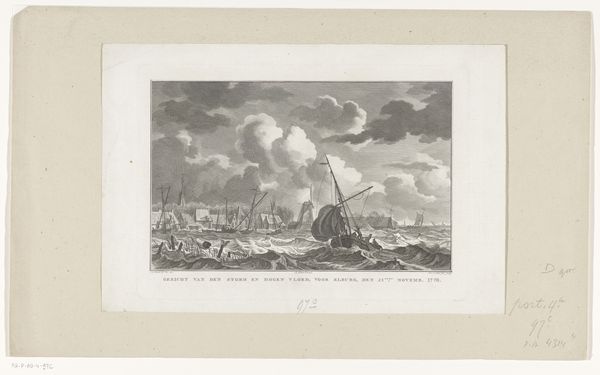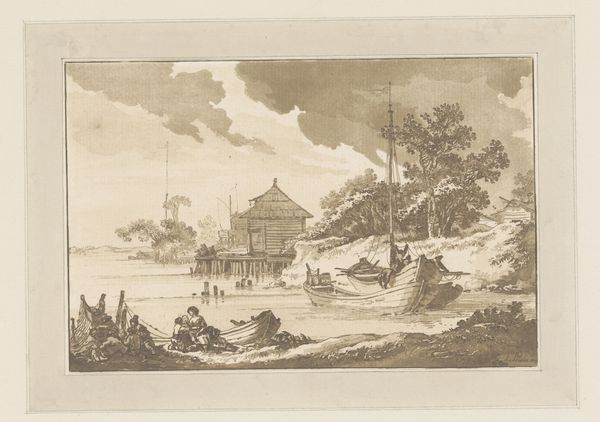
drawing, paper, pencil
#
pencil drawn
#
drawing
#
aged paper
#
dutch-golden-age
#
pencil sketch
#
landscape
#
figuration
#
paper
#
romanticism
#
pencil
#
line
#
pencil work
#
history-painting
#
realism
Dimensions: height 353 mm, width 457 mm
Copyright: Rijks Museum: Open Domain
Douwe de Hoop made this etching in 1825, depicting a flooded farmhouse in Friesland. De Hoop created this piece just after the devastating North Sea flood of February 1825, which ravaged the coasts of the Netherlands, Germany, and Denmark. In this stark image, we see the aftermath of unimaginable loss. The farmhouse, once a symbol of stability and sustenance, is now a skeletal ruin amidst churning waters. It is a poignant reminder of the precarious relationship between humanity and nature, and the vulnerability of marginalized communities who often bear the brunt of environmental disasters. The flood disproportionately affected the working class and farmers, who lived in low-lying areas and relied on the land for their livelihoods. De Hoop captures not only the physical destruction but also the emotional toll of such an event. As you look at the piece consider the profound social and economic impacts on the lives and livelihoods of ordinary people.
Comments
No comments
Be the first to comment and join the conversation on the ultimate creative platform.
